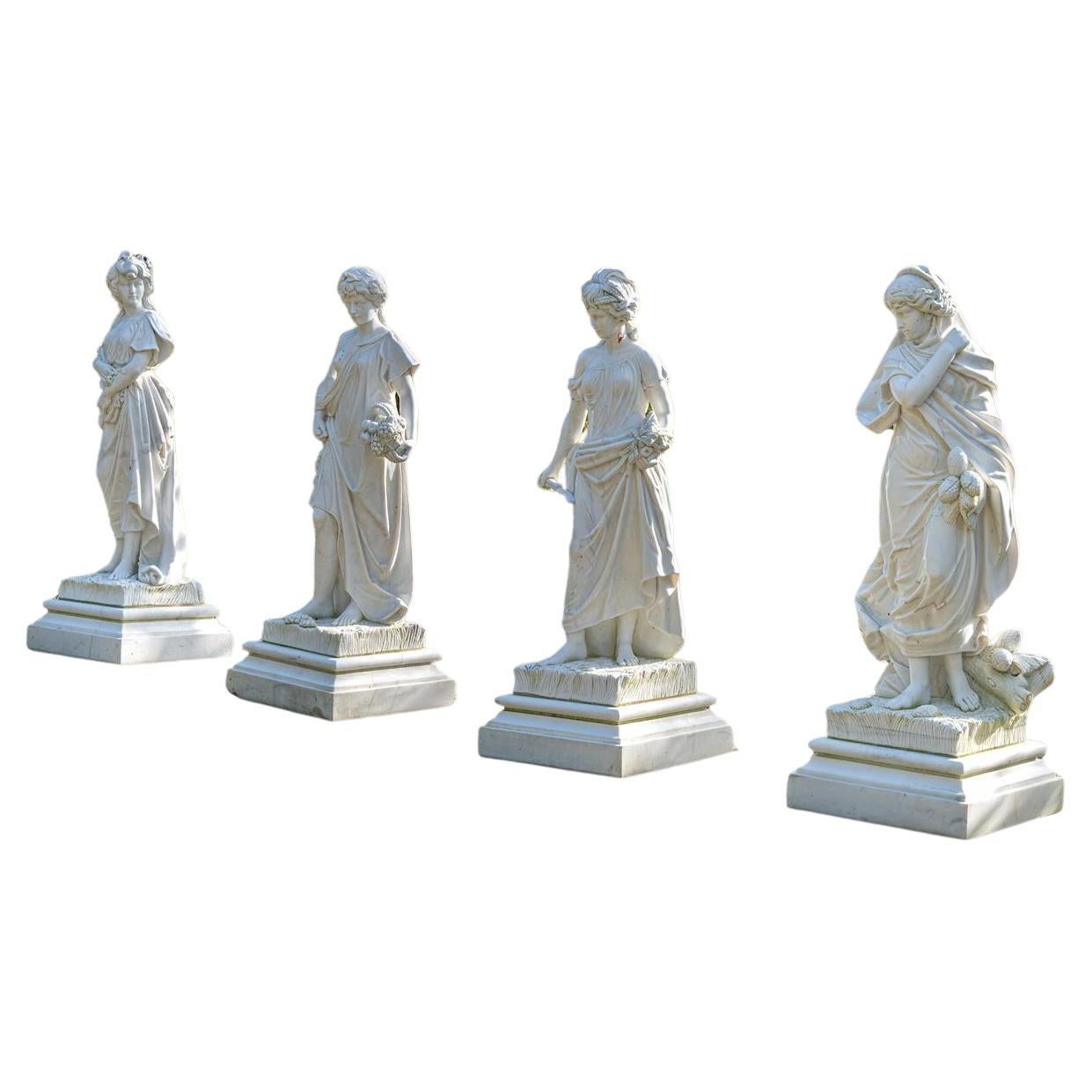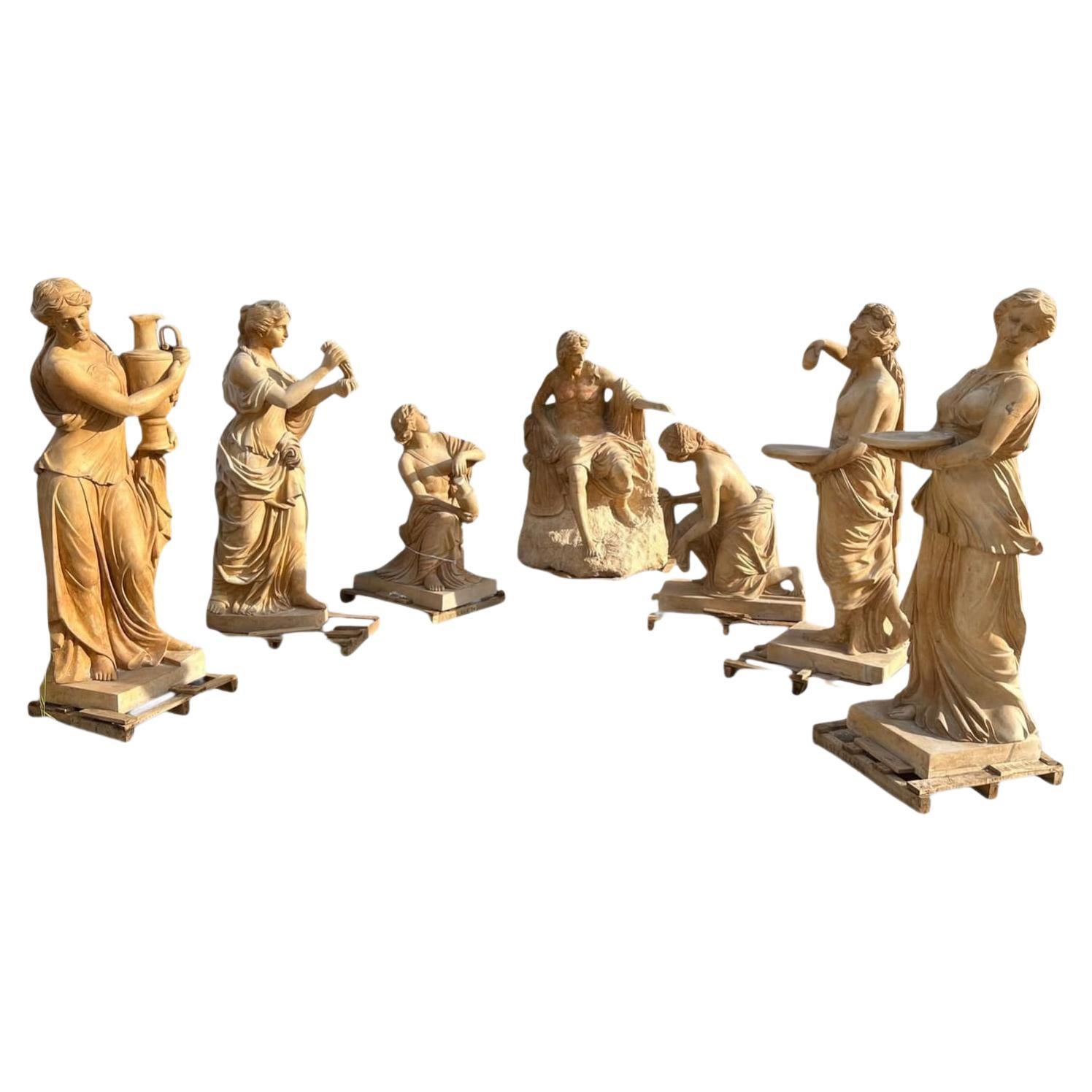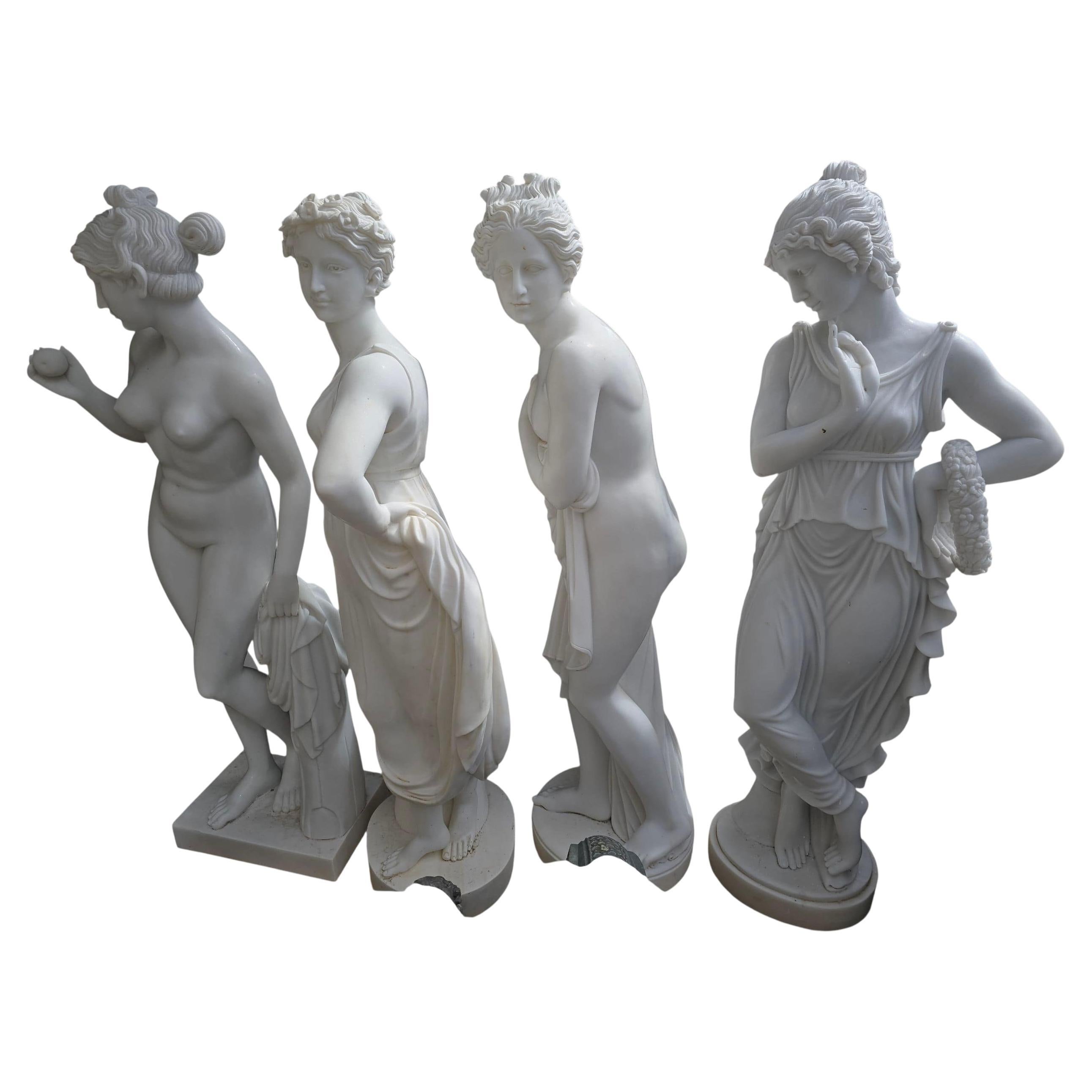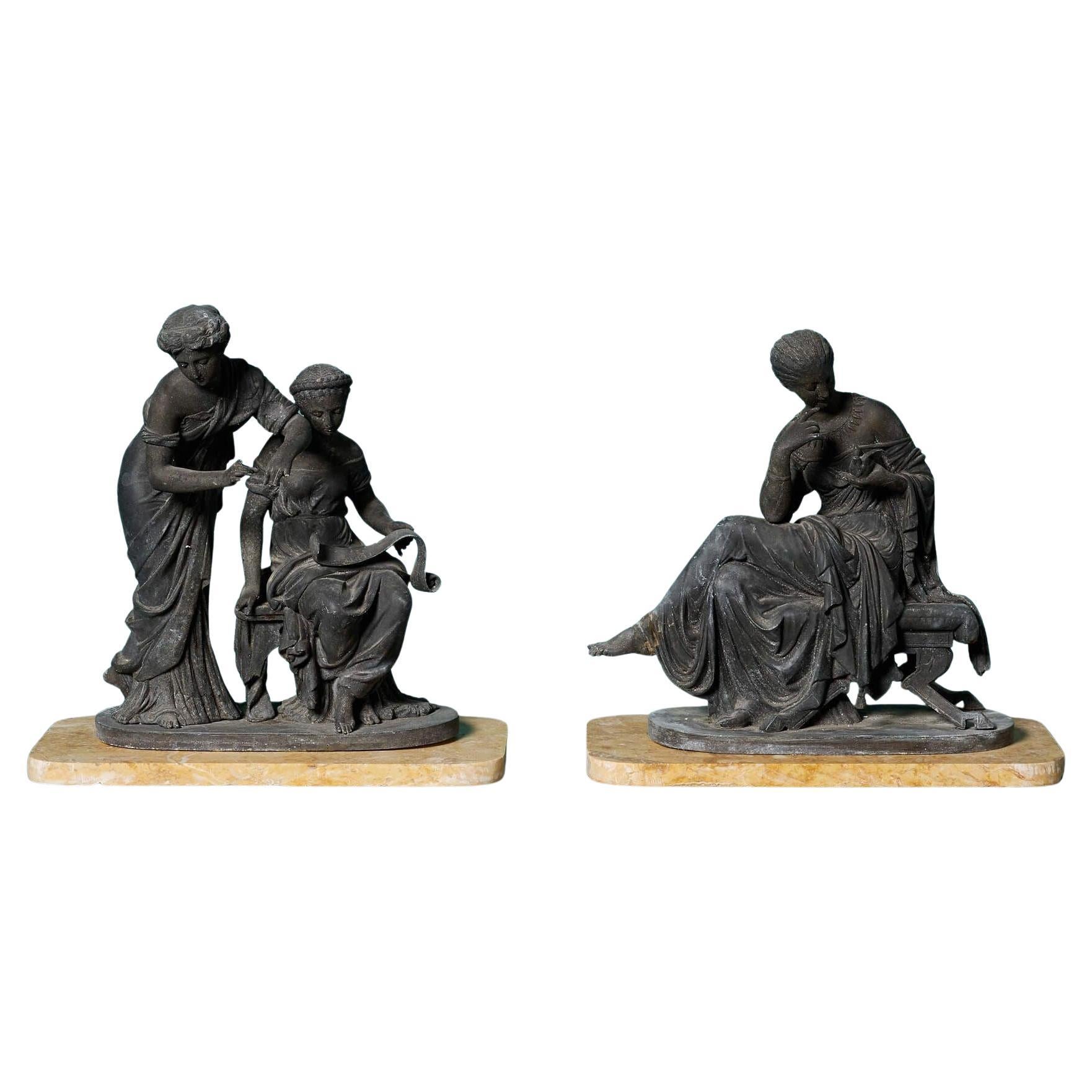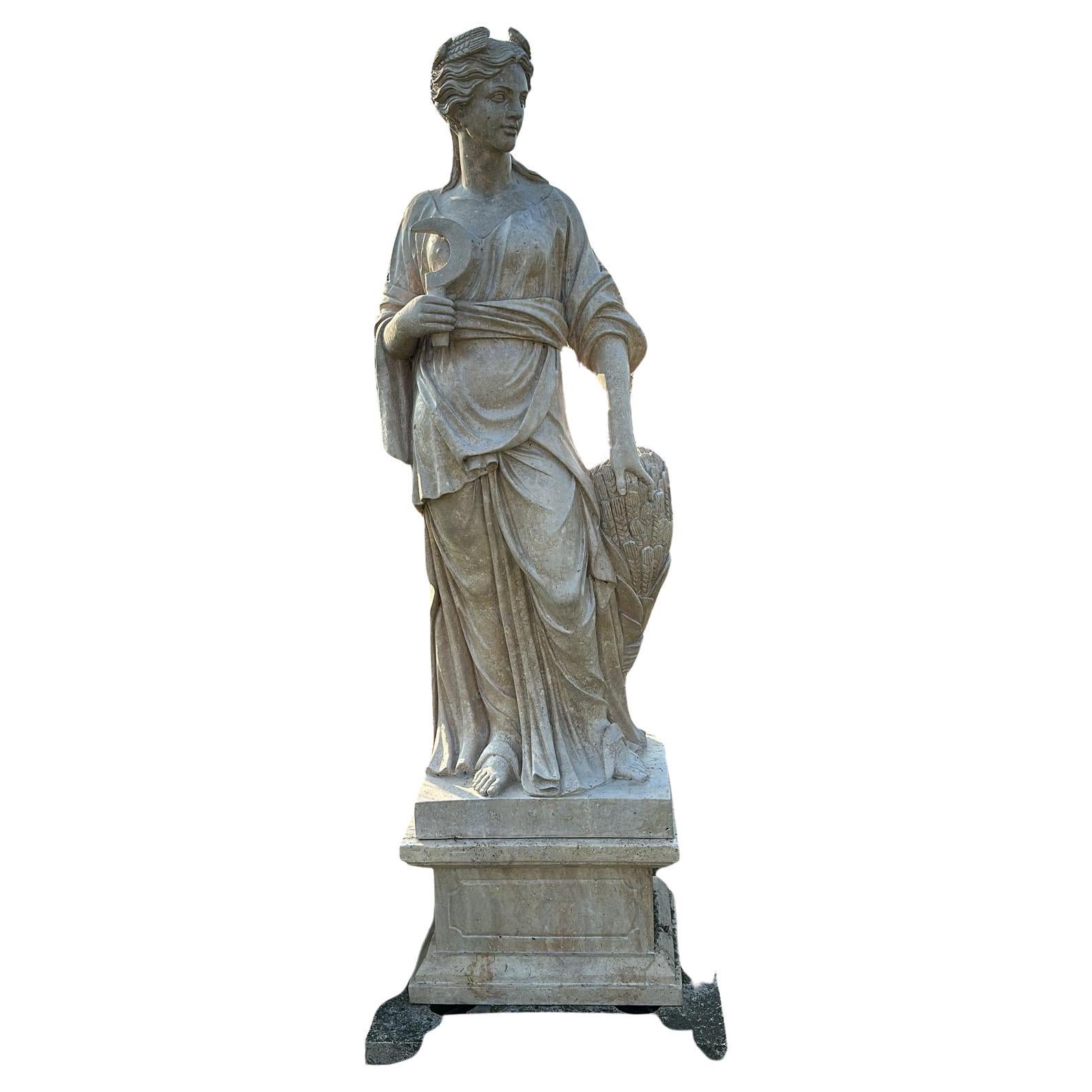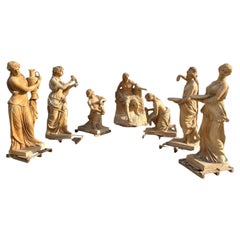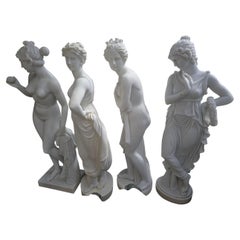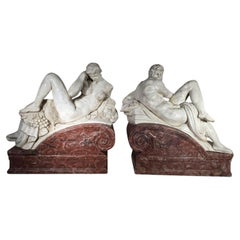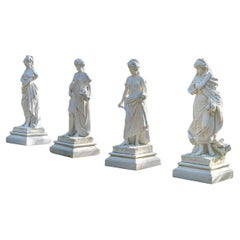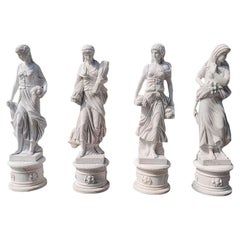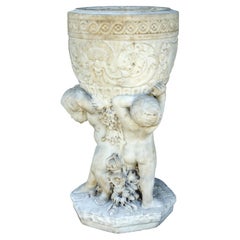Items Similar to 7 Stunning Italian Marble Sculptures Representing "The Baths of Apollo" VIDEO
Video Loading
Want more images or videos?
Request additional images or videos from the seller
1 of 22
7 Stunning Italian Marble Sculptures Representing "The Baths of Apollo" VIDEO
$147,646.86per set
£110,934.76per set
€125,000per set
CA$203,311.05per set
A$227,542.56per set
CHF 119,110.41per set
MX$2,764,229.68per set
NOK 1,512,399.46per set
SEK 1,427,207.22per set
DKK 951,374.33per set
Quantity
About the Item
7 Stunning Italian Marble Sculptures Representing "The Baths of Apollo" H: 220cm early 20th Century
France. Versailles. Palace. Gardens. Grove of the Baths of Apollo. Hubert Robert.
Palace of Versailles. Grove of the Baths of Apollo. Hubert Robert. 1778-1781. François Girardon and Thomas Regnaudin, in 1666.
The current Grove of the Baths of Apollo, which is part of the gardens of Versailles, was created between 1778 and 1781 by Hubert Robert under the reign of Louis XVI and features three groups of marble sculptures. These works were created between 1666-1672 for the Grotto of Thetis, built on the north side of the Palace of Versailles, before its final extension. The grotto was doomed to disappear when, in 1684, the north wing of the palace was built. The sculptures were taken to the Bois de la Renommée, and then moved to the Groves of the Marais. In 1705, this garden disappeared, and Jules Hardouin-Mansart created a new decoration to protect the three groups of sculptures: gilded lead canopies on pedestals, bordered by a pond. Under Louis XVI, the entire grove was completely modified and Hubert Robert created an English-style garden, the centre of which is occupied by a lake dominated by a small artificial mountain adorned with waterfalls, and in which three grottos were created to accommodate the three groups: Apollo served by the nymphs, in the centre, and The Horses of the Sun, on either side.
It seems that the general idea of the grotto's programme goes back to the memoirs of Charles Perrault, who took as a reference the second volume of Ovid's Metamorphoses, to evoke Apollo's rest at the end of his daytime career in the sea cave of the goddess Thetis. His brother, Claude Perrault, would be the one who devised the iconography of the sculptures (in the form of sketches) and, once royal approval had been given, Le Brun, painter and in charge of the decoration of the Palace of Versailles, was to make the execution drawings that were entrusted to the sculptors.
The central work - Apollo served by the nymphs nymphs—represents Apollo being bathed by nymphs in the Grotto of Thetis, which was the place where the god rested after driving his horse-drawn chariot across the sky from east to west during the day, making the reverse journey at night. While resting, Apollo is attended to by the nymphs. The work was created by the sculptors François Girardon and Thomas Regnaudin in 1666. It is made up of seven sculptures: Girardon is the author of the figure of Apollo—inspired by the Apollo of Belvedere—, of Doris, the nymph pouring water into the god’s hands, and of Melicerte, kneeling with a wet cloth in her hands. Regnaudin’s figures are: the one covering the god, designated as the goddess Thetis according to the 1707 sculpture inventory, Chloe, the nymph holding a tray, and Delphire carrying a large vase. The nymph kneeling at Apollo's feet, Clymene, carrying a vase on which a Rhine Passage is carved, is not mentioned by which of the two sculptors she belongs.
The Horses of the Sun groups were sculpted by Gilles Guérain (on the left, as we look) and the Marsy brothers (on the right, as we look) between 1668 and 1675 for the Grotto of Thetis. The sculptures represent horses that are joyful after being unhitched from the chariot of the Sun and feeling free. The sculptors were able to perfectly express the nervousness and the ardour of the horses that the tritons could barely contain. The Horses of the Sun followed the same path as the central group, finding refuge on either side of it in the grotto created by Hubert Robert in 1778. Apollo's solar chariot was pulled by four horses that represent the solar orbit. Their names, which may vary depending on the source, are: Erythreus (rising sun), Actaeon (the radiant dawn), Lampos (the resplendent and dazzling midday) and Philogeus (the setting sun).
Louis XIV, the Sun King, was identified with Apollo through the iconography of this god; a divinization that became more pronounced as his reign progressed. He used it in his public, official and private appearances, and even participated in performances disguised as the god Apollo.
- Dimensions:Height: 86.62 in (220 cm)Width: 25.6 in (65 cm)Depth: 11.82 in (30 cm)
- Sold As:Set of 7
- Style:Modern (Of the Period)
- Materials and Techniques:
- Place of Origin:
- Period:
- Date of Manufacture:early 20th Century
- Condition:Wear consistent with age and use. very good condition.
- Seller Location:Madrid, ES
- Reference Number:1stDibs: LU5779245548642
About the Seller
4.8
Platinum Seller
Premium sellers with a 4.7+ rating and 24-hour response times
Established in 2005
1stDibs seller since 2021
366 sales on 1stDibs
Typical response time: 1 hour
- ShippingRetrieving quote...Shipping from: Madrid, Spain
- Return Policy
Authenticity Guarantee
In the unlikely event there’s an issue with an item’s authenticity, contact us within 1 year for a full refund. DetailsMoney-Back Guarantee
If your item is not as described, is damaged in transit, or does not arrive, contact us within 7 days for a full refund. Details24-Hour Cancellation
You have a 24-hour grace period in which to reconsider your purchase, with no questions asked.Vetted Professional Sellers
Our world-class sellers must adhere to strict standards for service and quality, maintaining the integrity of our listings.Price-Match Guarantee
If you find that a seller listed the same item for a lower price elsewhere, we’ll match it.Trusted Global Delivery
Our best-in-class carrier network provides specialized shipping options worldwide, including custom delivery.More From This Seller
View AllLarge Travertine Marble Sculptural Group Italian, 20 th
Located in Madrid, ES
Remarkable sculptural group composed of seven hand-carved statues in travertine marble, representing The Bath of Apollo. This Italian work, likely created in the mid-to-late 20th cen...
Category
Vintage 1980s Statues
Materials
Marble
Set of Four Large Carrara Marble Statues Representing the Four Seasons
Located in Madrid, ES
Elegant set of four large sculptures carved from fine white Carrara marble, each representing one of the Four Seasons—Spring, Summer, Autumn, and Winter. Crafted with classical inspi...
Category
Vintage 1980s Statues
Materials
Marble
Magnificent Life-Size Marble Sculpture from Italy 220
Located in Madrid, ES
Add a touch of classical elegance to your collection with this magnificent life-size marble sculpture, masterfully crafted from the finest Italian marble. This exceptional piece, met...
Category
Late 20th Century Statues
Materials
Marble
Marble Sculptures After Michelangelo Buonarroti – "Day" and "Night" – Early 20th
Located in Madrid, ES
Marble Sculptures After Michelangelo Buonarroti – "Day" and "Night" – Early 20th Century
Magnificent pair of large marble sculptures, inspired by Michelangelo Buonarroti's masterpie...
Category
Early 20th Century Figurative Sculptures
Materials
Carrara Marble
Spectacular Italian Sculptures "The Four Seasons" in Carrara Marble 19th Century
Located in Madrid, ES
Spectacular Sculptures "The Four Seasons" in Carrara Marble 19th Century
total height: 225cm
statue height: 183cm
base: 48cm x 63cm
base height: 40cm
good condition for the period
Category
Antique 19th Century Italian Baroque Figurative Sculptures
Materials
Carrara Marble
Four Hand-Carved Italian Marble Statues Representing the Four Seasons, 220 cm
Located in Madrid, ES
Elegant set of four hand-carved Italian marble sculptures, each representing one of the Four Seasons—Spring, Summer, Autumn, and Winter. Crafted in Italy during the 1980s, these fine...
Category
Vintage 1980s Statues
Materials
Marble
You May Also Like
A set of four hand carved statuary marble statues depicting ‘The Four Seasons”
By Carlo Nicoli
Located in Tyrone, Northern Ireland
A set of four hand carved statuary marble statues depicting ‘The Four Seasons” after Carlo Nicoli
Winter wearing a cloak, Spring with flowers, Summer with sheath of corn and scythe, ...
Category
20th Century Italian Neoclassical Statues
Materials
Statuary Marble
19th Century Classical Figures on Marble Bases
Located in Wormelow, Herefordshire
Two elegant 19th century classical spelter figures on yellow fossilised marble bases, dating to circa 1850.
This decorative pair of classical sculptures – one modelled as a seated f...
Category
Antique Mid-19th Century English Neoclassical Figurative Sculptures
Materials
Marble, Metal, Spelter
Four Seasons Italian Carrara Marble Statues
Located in Cranbrook, Kent
Four Seasons Italian Carrara marble statues.
Classically draped female figures in their distinguishing symbols.
Autumn, winter, spring and summer.
True Italian carving from the Car...
Category
1990s Italian Classical Roman Statues
Materials
Carrara Marble
Italian Carrara Marble Garden Sculpture
Located in Essex, MA
With three cherubs on an octagonal base supporting a finely carved urn.
Category
Antique Late 19th Century Italian Neoclassical Revival Statues
Materials
Carrara Marble
Italian Marble Statue Sculpture by Romanelli
Located in New York, NY
Finely carved Italian Carrara marble
Title: Amore E Psiche
Artist: Pasquale Romanelli (1812-1887)
Origin: Italian
Date: 19th century
Signature: Signed Prof. P. Romanelli/Fire...
Category
Antique 19th Century Italian Figurative Sculptures
Materials
Carrara Marble
Italian Stone Garden Sculpture of Roman Mythological Subject Minerva
Located in Rome, IT
Finely carved mythological roman subject of Minerva in limestone. Excellent condition from an estate of Veneto.
Measurements: Statue cm 180, base cm 80.
Minerva (Pallas Athena in Gr...
Category
Late 20th Century Italian Neoclassical Statues
Materials
Limestone
More Ways To Browse
Small Marble Sculpture
Versailles Antique
Palace Of Versailles
Large Italian Marble Sculpture
Italian Marble Figure
Antique Kneeler
Marble Holding Hands
Marble Feet Sculpture
Sculptors Pedestal
Marble Goddess
Robert Marble
Nymph Sculpture
Horse On Marble
Grotto Furniture
Antique Lead Sculpture
Marble Bath
Hand-Carved Horses
Marble Tray Large
